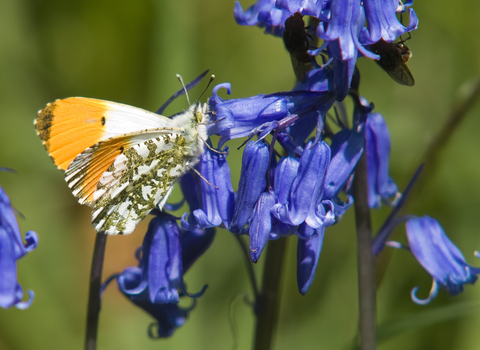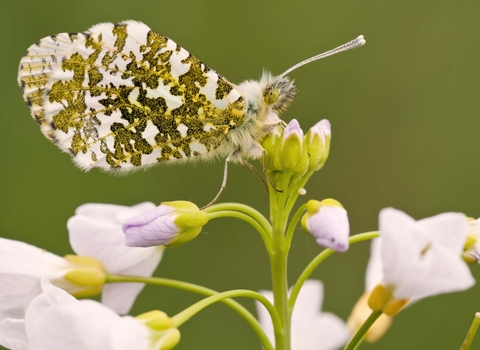
Orange-tip ©Bob Coyle

©Ross Hoddinott/2020VISION
Orange-tip
It’s easy to see where these butterflies get their name – the males have bright orange tips on their wings! See them from early spring through to summer in meadows, woodland and hedges.
Scientific name
Anthocharis cardaminesWhen to see
April to JulySpecies information
Category
Statistics
Wingspan: 4.0-5.2cmCommon.
